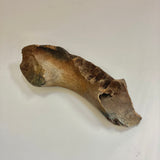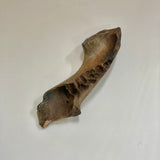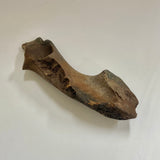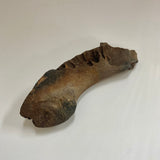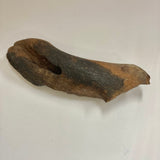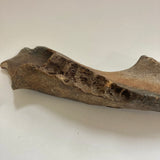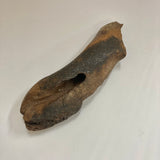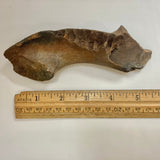The mammoths and mastodons of the Ice Age share an unlikely relative that is still alive today (besides the modern elephant)--the manatee.
These two mammals share several characteristics: tusk-like incisor teeth; the use of their prehensile lips to grasp food similarly to elephants' use of their trunks; a matching toenail on the manatee flipper and elephant toe; and teeth that are replaced with horizontal frontal movement called "marching molars" like elephant's.
Manatees (also called "sea cows") have lived in Florida for over 45 million years eating dozens of pounds of sea grasses and sleeping in their waters for half the day. The modern manatee (Trichechus sp.) evolved roughly 3 million years ago.
Manatees have just one kind of teeth: hind molars for grinding. Their teeth are continuously moving forward in a hind molar progression as they get worn down from chewing. Instead of one tooth falling and being replaced by the another in the same spot, the whole plate of teeth falls out as new teeth emerge. The number of teeth a manatee can have in a lifetime is undetermined.
Includes label
Type: Manatee Jaw
Species: Trichechus sp.
Age: Pleistocene
Locality: Charlotte County, Florida
Size: 5.5 x 1.13 x 1.75 inches
Weight: 4.8 oz.








